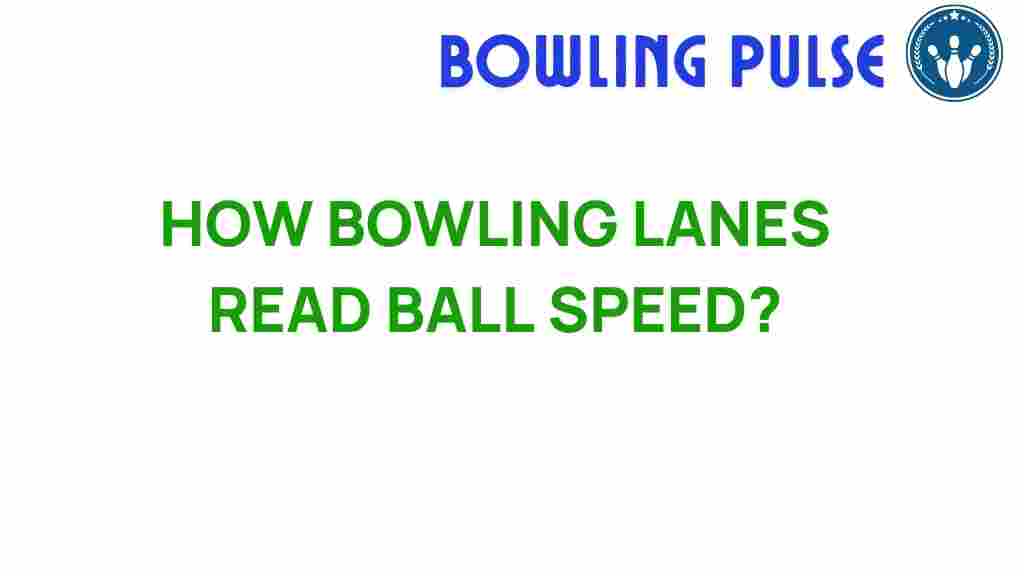Unraveling the Secrets: How Bowling Lanes Read Ball Speed
Bowling is a sport that combines skill, technique, and a bit of science. One of the key factors that can make or break a game is understanding how bowling lanes read ball speed. This knowledge not only enhances performance but also provides insight into lane dynamics and the physics behind the game. In this article, we will explore the technology used in bowling lanes to measure ball speed, the science behind bowling analysis, and how understanding these factors can elevate your game.
The Importance of Ball Speed in Bowling
Ball speed is crucial in bowling as it influences how the ball interacts with the lane and pins. The right ball speed can help achieve the perfect strike by maximizing pin action. Here are some reasons why understanding ball speed is essential:
- Pin Action: Faster ball speeds can create more pin action, leading to higher chances of strikes.
- Lane Conditions: Different lane conditions require adjustments in ball speed for optimal performance.
- Technique Optimization: Knowing your ball speed helps you refine your bowling techniques.
How Bowling Lanes Measure Ball Speed
Bowling lanes utilize advanced technology to measure the speed of the bowling ball as it travels down the lane. Here’s how this process works:
1. Laser Sensors
Many modern bowling alleys are equipped with laser sensors that track the ball’s speed. These sensors are strategically placed at various points along the lane and can detect the ball’s speed as it passes through. The data collected is then used to provide real-time feedback to the bowler.
2. Infrared Technology
Some bowling lanes employ infrared technology, which uses infrared beams to detect the ball’s movement. This method is highly accurate and provides precise measurements of ball speed, allowing bowlers to analyze their performance metrics effectively.
3. Video Analysis
Advanced bowling centers may also use video analysis combined with software that calculates ball speed. By capturing the bowler’s delivery and the ball’s trajectory, coaches can provide detailed feedback on speed and technique.
Understanding Lane Dynamics
To fully grasp how bowling lanes read ball speed, it’s essential to understand lane dynamics. Lane dynamics refer to how the surface of the lane affects the ball’s speed, rotation, and trajectory. Here are some key components:
- Lane Surface: The type of oil pattern applied to the lane significantly impacts how the ball behaves. Different surfaces can either increase or decrease ball speed.
- Ball Weight: Heavier balls tend to move slower but can create more pin action, while lighter balls may move faster but are often less effective at knocking down pins.
- Bowler’s Technique: A bowler’s approach, release, and follow-through can all influence the initial speed of the ball. Proper technique is essential for maximizing performance metrics.
Performance Metrics in Bowling
Performance metrics in bowling involve analyzing various factors that contribute to a bowler’s success. Here are some important metrics to consider:
- Average Ball Speed: Tracking your average ball speed can help identify trends and areas for improvement.
- Strike Percentage: This metric shows how often you convert your shots into strikes and can be influenced by ball speed.
- Spare Conversion Rate: How well you convert spares can also be affected by the speed at which you deliver the ball.
Bowling Techniques to Optimize Ball Speed
Improving your bowling techniques can lead to better ball speed and overall performance. Here are some tips:
1. Consistent Approach
Maintaining a consistent approach is vital for achieving the desired ball speed. Work on your footwork and timing to ensure a smooth delivery.
2. Proper Grip
The way you grip the ball affects its speed and rotation. Ensure that your grip is firm yet relaxed to allow for maximum control.
3. Release Timing
Timing your release is crucial for optimizing ball speed. Practice releasing the ball at the right moment to achieve the desired speed.
Troubleshooting Ball Speed Issues
If you find that your ball speed is inconsistent or not where you want it to be, consider the following troubleshooting tips:
- Check Your Grip: Ensure your grip is neither too tight nor too loose, as both can affect speed.
- Analyze Your Stance: A poor stance can lead to an inconsistent approach, impacting your speed.
- Seek Feedback: Utilize technology like video analysis to gain insights into your technique and make necessary adjustments.
The Role of Sports Science in Bowling
Sports science plays a significant role in understanding and improving bowling techniques. By applying principles of biomechanics, sports psychology, and performance analysis, bowlers can enhance their skills effectively. Here are some ways sports science contributes to bowling:
- Biomechanics: Understanding the body’s movements helps bowlers perfect their technique, leading to improved ball speed and accuracy.
- Training Programs: Customized training programs can be developed based on individual performance metrics and goals.
- Injury Prevention: Sports science provides insights into proper conditioning and injury prevention strategies, allowing bowlers to maintain peak performance.
Conclusion
Understanding how bowling lanes read ball speed is an essential aspect of improving your game. By leveraging technology, analyzing lane dynamics, and applying sports science principles, bowlers can refine their techniques and achieve better performance metrics. Whether you are a novice or an experienced bowler, employing these strategies will undoubtedly enhance your bowling experience.
For further insights into improving your bowling skills, consider checking out this detailed guide on bowling techniques. Additionally, you can explore more about the technology used in bowling through this external resource.
With dedication and the right knowledge, you can unlock the secrets of ball speed and elevate your bowling game to new heights!
This article is in the category Techniques and created by BowlingPulse Team
